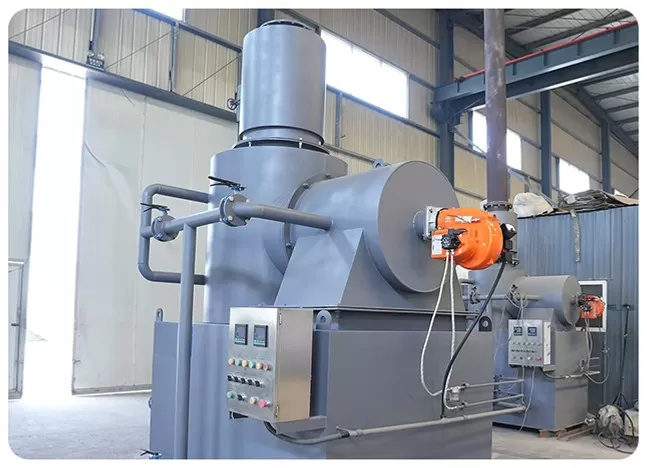Routine maintenance is critical for ensuring stable operation, extending service life, and meeting environmental standards for pet remains incinerators. Follow these best practices for optimal performance.
Power & Fuel Supply: Ensure stable power and fuel availability to prevent unexpected shutdowns.
Combustion System: Check burners, ignition devices, and control systems to avoid incomplete combustion.
Flue Gas Treatment: Inspect dust collectors and purifiers to guarantee compliance with emission standards.
Furnace Residue Removal: Clear ash and unburned remains after each use to maintain hygiene.
Flue Gas System Cleaning: Prevent clogging in dust collectors and filters to sustain purification efficiency.
Filter Maintenance: Clean or replace filters regularly to block harmful emissions.

Wear-Part Replacement: Monitor nozzles, ignition pins, and other high-wear components.
Electrical System Check: Inspect cables, terminals, and connections for damage or looseness.
Lubrication & Tightening: Reduce friction in moving parts and secure fasteners for stability.
Proper Training: Ensure operators understand incinerator functions and safety protocols.
Strict SOP Compliance: Follow standardized startup, operation, and shutdown procedures to prevent damage.
Fire Prevention: Keep flammable materials away and have extinguishers accessible.
Personal Protection: Use heat-resistant gear to avoid burns and exposure to harmful substances.
Eco-Friendly Operation:
Maintain flue gas purification to minimize pollution.
Dispose of post-incineration residues safely & responsibly.
Proactive maintenance—covering inspections, cleaning, part replacement, operator training, and environmental measures—ensures longevity, efficiency, and regulatory compliance. Follow these steps for optimal incinerator performance and sustainability.
Action Tip: Schedule monthly maintenance logs to track inspections, replacements, and cleaning cycles.